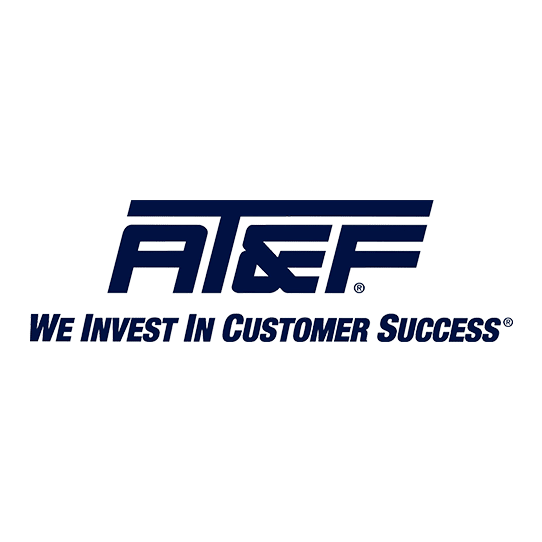Though the nation has experienced more than its share of bad economic news in the past year and a half, one bright spot has emerged. Merger and acquisition activity among small and medium-sized manufacturers has heated up significantly, with many unsolicited offers coming to owners who had no intention of selling. In many cases, those sales have moved forward due to the strong price offers.
Whether or not a sale has been planned, there are several key considerations for owners of manufacturing companies who find an offer on the table. And it’s important to understand why this jump in M&A activity is happening.
Why All the Manufacturing M&A Activity?
The increase in M&A activity among midwestern manufacturers is more pronounced among small to medium-sized businesses in the revenue range of $10 million to $100 million, and in certain subsectors. Plastics and equipment manufacturers, in particular, are seeing a lot of activity.
Generally, manufacturing companies appeal to buyers and entrepreneurs because of the ease of transitioning into their revenue streams and processes. They are particularly appealing if they source 100% of their raw materials domestically.
Moreover, banks look favorably on deals with manufacturers because they involved equipment and inventory – assets that support the underwriting of loans. Manufacturing companies also produce good cash flow and qualify for a variety of tax incentives.
Impact of COVID-19
The current manufacturing M&A trend represents a combination of circumstances, including fallout from the COVID-19 pandemic.
Supply chains were strained by the pandemic as raw materials and components became scarce in 2020. This is especially true of goods that are traditionally shipped from China and other countries, but also some from within the U.S. In some cases, buyers located on the East and West coasts sought supply chain solutions in the Midwest when their traditional suppliers were shut down due to the pandemic. There were few shutdowns in the midwestern states, so many midwestern manufacturers gained new customers and increased sales during the worst of the pandemic as their West Coast and East Coast competitors had to shut down.
For buyers, this created an opportunity to make acquisitions that could create synergies and offset supply chain problems. Acquiring component manufacturers in the Midwest could create efficiencies and contain costs by guaranteeing the supply of component parts, helping build market share, or diversifying product lines.
To help strengthen the economy in the wake of COVID-19, the Federal Reserve Bank has indicated it will keep short-term interest rates low at least through 2022. The assurance of low interest rates is expected to stimulate more M&A activity in many industries, including manufacturing, for at least the next year.
What Sellers Should Consider
For manufacturers faced with a strong purchase offer, here are several key considerations:
- Contact your trusted advisors, including your accountant and your attorney, early in the process. They can help you weigh the offer and determine if it fits in with your company’s strategic plan, as well as your personal plans as an owner. Moreover, if you decide to move ahead they will advise you on one of the most important aspects of a sale – the deal structure. How the sale is structured will have a significant impact on the tax considerations for you and any partners you may have.
- Have a business valuation performed. You can’t know how good a buyer’s offer is unless you know the true market value of your business. Discuss with your advisors factors that may not show up in a valuation, such as key personnel, workforce issues, whether new equipment or technology is needed, and future sales opportunities, among others.
- Get your financials in order. That means removing any personal expenses from the company books and making sure the financials and tax matters are up to date. The buyer’s lender may require audited financial statements. If so, now is the time.
- Take time to get to know the buyers. Chances are the sale will involve a multi-year earnout process during which you will stay on board for the transition. If you can’t work together on a day-to-day basis, it’s not going to be successful.
If you would like to discuss the sale of your manufacturing business, contact your Barnes Wendling advisor.
Related Insights
Featured Post

Featured Client Testimonials
BW is a true partner to us. Their knowledge, expertise, and service are a valuable resource to us and play an important role in our success!
John Allen - Vice President of Finance, Kaufman Container

Featured Client Testimonials
I appreciate the exceptional tax advice we received over the years. The (BW team) has a good grasp of our business needs. Thank you for your excellent service.
John Griffiths - Owner, Rae Ann, Inc.

Featured Client Testimonials
The BW team has been fantastic to work with; both the team member at our office as well as at the partner level. Any issues or concerns are handled very efficiently and effectively.
Kelley Needham - Chief Executive Officer, Epilepsy Association

Featured Client Testimonials
Barnes Wendling has been our company accountants for over seven years. Their knowledge has been instrumental in helping us grow strategically during this time. And although we’ve seen many changes in our economy that we cannot control, we’ve always been able to trust the Barnes team to be by our side. The Barnes team feels like family. We can’t thank them enough for their support!
Christine Kloss - Controller, AT&F

Featured Client Testimonials
Barnes Wendling has been our company accountants for over 15 years. During this time, the business has grown exceptionally, and Barnes has kept pace, providing accurate, quality advice. Our finances are more efficient than ever, and the expense of hiring Barnes has been a definite positive add to our bottom line. I give my highest recommendation to their firm.
David Miller, MD - President, Retina Associates of Cleveland

Featured Client Testimonials
Barnes Wendling has provided us guidance and recommendations that have strategically helped strengthen our business and position ourselves for growth. We needed to hire a new VP of Finance and Controller this past year, and they were instrumental in helping us find the best candidates for our company.
Sara Blankenship - President, Kaufman Container

Featured Client Testimonials
We value the trust, accuracy of information, and reliability of Barnes Wendling and Mike Essenmacher personally. Mike has been instrumental as a trusted advisor on accounting, tax, and personnel issues. His advice is always accurate, and he is very reliable. His associates are also very talented.
Dominic Ozanne - President and CEO, Ozanne Construction Company

Featured Client Testimonials
We value Barnes Wendling’s expertise with all things accounting so we can operate our business using our strengths and allowing them to be our experts. They have also brought me a few business sale opportunities to allow me to grow my assets.
John Gaydosh - President and Metallurgical Engineer, Ohio Metallurgical Service

Featured Client Testimonials
Barnes Wendling (especially Lena) did a great job with our financials. Everything. It is extremely refreshing and comforting to know that all of our numbers are not only correct, but they are in the right place(s). Your diligence and reporting truly does make me (personally) feel better.
Thomas Adomaitis - Controller, Bialosky Cleveland

Featured Client Testimonials
I can wholeheartedly tell you that I have yet to work with an audit or tax team that have been more helpful, easy to work with, and committed than the team at Barnes Wendling- I have been through three different firms in the last few years.
Michelle Saylor, Former Controller, Aero Mag

Featured Client Testimonials
Floyd Trouten at Barnes Wendling CPAs is an “expert’s expert” when it comes to M & A accounting. Not only does he understand the evolving details of the Tax Code but he also sees the fine points of their application for owners, managers, investors, and financiers.
Mark A. Filippell, Western Reserve Partners

Featured Client Testimonials
The service is amazing at Barnes Wendling CPAs. The benefit is worth more than the cost. Sometimes it’s true that you get what you pay for.
Mark Boucher - Former Owner, Castle Heating & Air









